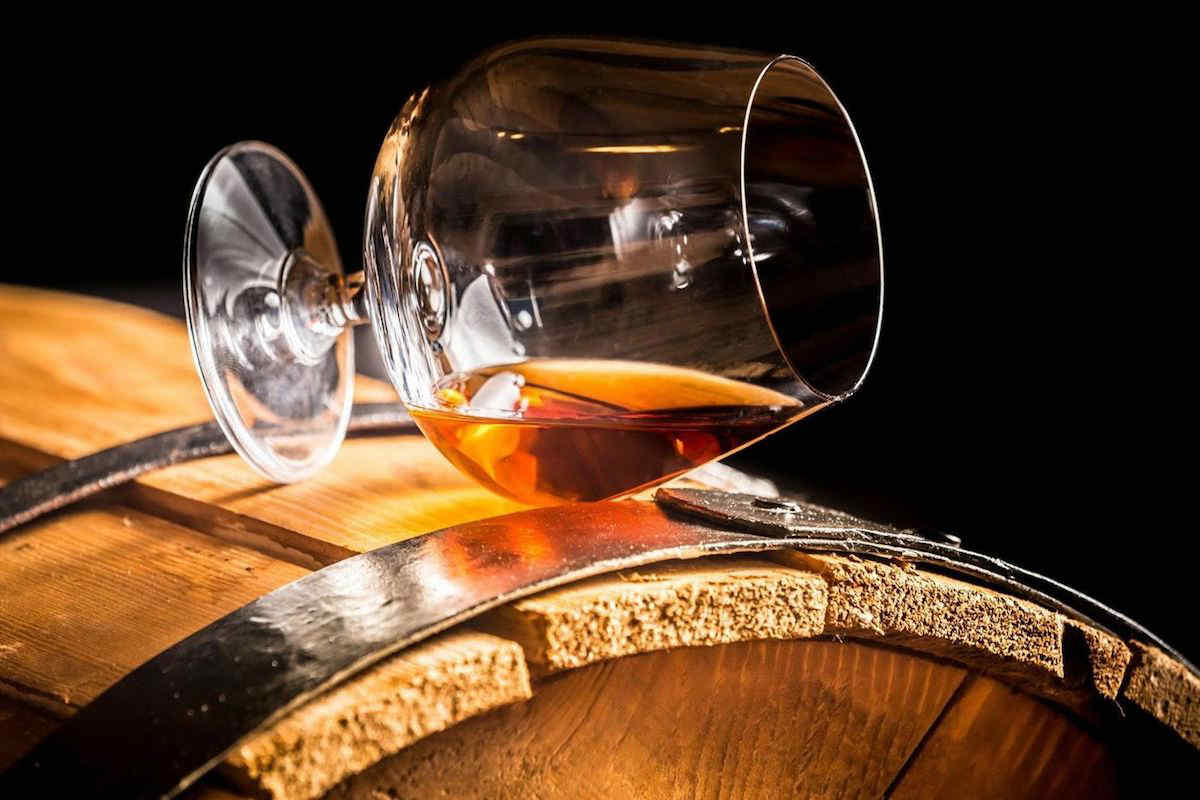Cognac. Armagnac. Both are French brandies. And for better or worse, each conjures images of suited men in wood-paneled rooms holding snifter glasses and cigars. It can get confusing. So we’re cutting through that smoke to get you the need-to-know story about what makes each of these spirits distinct.
What Is Cognac?
Cognac is a brandy distilled from white wine. It can only be produced in a select number of wine-growing regions (or crus) around the town of Cognac in Southwestern France. Producers must follow a strict Appellation D’origine Contrôlée (AOC) established by the French government to have their product labeled as cognac.
Cognac Basics
- The Cognac growing region includes six crus: Grande Champagne, Petit Champagne, Borderies, Fins Bois, Bois Bois, and Bois à Terroirs.
- Nine grapes can be used to make cognac: Colombard, Folle Blanche, Jurançon Blanc, Meslier Saint-François, Montils, Sémillon, Ugni Blanc, Folignan and Sélect.
- Cognac must be distilled twice in a copper pot still.
- Cognac may not be distilled higher than 72% ABV.
- Cognac must be aged for a minimum of two years in an oak cask.
- Cognacs are often sold as blends (particularly outside of France), but single estate cognacs are also produced.
What Is Armagnac?
Armagnac is also a brandy distilled from white wine. Its AOC designation encompasses three planting areas in the province of Armagnac in Southwestern France. It is exported at a much lower rate than cognac, and primarily made by small producers, many of whom rely on mobile “roving stills” to distill on-site after the grape harvest. Because the majority of Armagnac is distilled once and the spirit is not always diluted before bottling, Armagnac tends to carry more of the flavors and characteristics of the wine vintages used to produce them.
Armagnac Basics
- The plantation regions used for Armagnac are Bas-Armagnac, Armagnac Tenarèze and Haut-Armagnac.
- Four grapes are primarily used to make Armagnac: Ugni Blanc, Folle Blanche, Colombard, and Baco.
- Ninety-five percent of Armagnac is distilled once using a continuous still made express for Armagnac.
- Armagnac is typically distilled to a strength of 52-60% ABV, and cannot be distilled higher than 72% ABV.
- Armagnac must be aged for a minimum of two years in an oak cask.
- Armagnacs are often sold as blends, but single vintages are common.
- Blends are sometime diluted with a combination of Armagnac and distilled water; vintages are rarely diluted.
Cognac and Armagnac Age Categories
Blends of Cognac and Armagnac are classified by four different grades, each pertaining to the age of the youngest portion of the blend.
- V.S. (Very Special) indicates a minimum of two years.
- V.S.O.P (Very Superior Old Pale) indicates a minimum of four years.
- X.O. (Extra Old) or Napoleon indicates a minimum of six years.
- Hors d’âge indicates a minimum of 10 years.



